UPSC Daily Current Affairs - 26th June 2024 | Current Affairs & Hindu Analysis: Daily, Weekly & Monthly PDF Download
GS3/Defence & Security
India needs the anchor of a national security strategy
Source: The Hindu
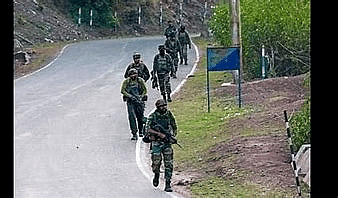
Why in news?
The newly elected National Democratic Alliance government is confronted with several longstanding and complex national security issues.
Strategic Relations with the US and Competition with China:
- China poses various challenges such as a significant naval build-up, geoeconomic clout in South Asia, and leverage in global supply chains.
- India must manage its strategic partnership with the US while dealing with the competition from China.
Global Conflicts Impact:
- Conflicts in distant regions like Ukraine and Gaza showcase new technologies and tactics of war that could affect India's strategic relations and defense strategies.
Challenges Involved in the Near Future for the Indian Government:
- The government needs to make critical decisions on military investments, including projects like building another aircraft carrier and implementing theaterisation.
- There is a need to consider national security holistically rather than making fragmented decisions that may waste resources.
- Addressing strategic risks like climate change, pandemics, and China's growing influence requires long-term policy efforts.
- Efforts from different government branches such as the military and national security agencies need better synchronization.
Blueprint for Expanding Power:
- A National Security Strategy (NSS) would help in thoroughly reviewing threats, opportunities, and global security trends.
- An NSS would provide a coherent framework for long-term strategic planning, resource allocation, and military capability development.
- It would clarify India's strategic intent and role as a net security provider in the Indian Ocean.
- An NSS would align the efforts of various national security agencies and military branches for better coordination and integration.
Issue of Accountability:
- An NSS would ensure that government policies are transparent and accountable to Parliament and citizens.
- It would help in ensuring that the bureaucracy follows the political leadership's strategic direction.
- A strong NSS endorsed by the Prime Minister should serve as a public document to synchronize efforts and signal political intent both domestically and internationally.
- An NSS would assist in rational decision-making for long-term national growth and security by identifying trade-offs and opportunity costs.
Conclusion:
Developing a coherent strategic framework within the NSS is essential to outline India's national security objectives, priorities, and methodologies to achieve them. This framework should guide decision-making on defense investments, international partnerships, and response strategies to global challenges like climate change and pandemics.
Mains PYQ:
What introduces friction into the ties between India and the United States is that Washington is still unable to find for India a position in its global strategy that would satisfy India's National self-esteem.
GS1/History & Culture
Sucheta Kripalani (1908-1974): India's First Woman Chief Minister
Source: Indian Express
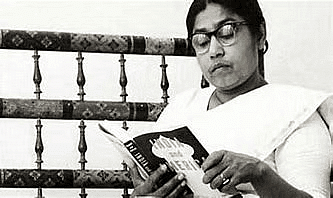
Why in news?
June 25 is the birth anniversary of "Sucheta Kripalani".
Who was Sucheta Kripalani?
- Sucheta Kripalani was born on June 25, 1908, in Ambala, Punjab. She was the daughter of S. N. Majumdar, a government surgeon. She pursued her education at Indraprastha College for Women and St. Stephen's College, University of Delhi.
- She got married to J. B. Kripalani, a former Congress president and Gandhian, in April 1936 against familial and Mahatma Gandhi's wishes.
Political Journey and Chief Ministership
- Early Career: She joined BHU to teach Constitutional History in 1929, participated in Satyagraha, and was imprisoned in 1940.
- Congress Role: Sucheta organized the foreign affairs wing of AICC and later founded the All India Mahila Congress. She won by a margin of 99 votes over Kamalapati Tripathi and was sworn in as CM on October 2, 1963.
Contributions and Achievements
- Educational Reforms: She waived school fees for girls up to Class 10 from January 1965. Established Meerut University and Kanpur University.
- Social Reforms: Increased reservation for SCs in government jobs to 24% in Group C and 45% in Group D until the 18% target was achieved.
- Infrastructure Developments: Established a Sainik School in Ghorakhal, a new medical college in Meerut, and the UP Awas Vikas Parishad. She created the post of agriculture production commissioner.
- Crime Control: Neutralized many dacoits in the Chambal Valley with the help of the Police Radio Unit.
- Anti-Corruption Stance: Emphasized the need to tackle growing corruption in public services, supporting the Union government's initiative to appoint a vigilance commission.
- Multifaceted Contributions: Involved in relief activities for the 1934 Bihar earthquake, Noakhali riots, Tibetan refugee rehabilitation, and the Indo-Pak War of 1971.
Criticism and Response
Sucheta faced criticism for being influenced by English, despite being a staunch supporter of Hindi. She advocated for creating an atmosphere for Hindi in governance.
Later Life and Legacy
- Post-CM Career: She served as Lok Sabha MP until 1971.
- Impact: Her tenure as CM and various social contributions left a lasting impact on Indian politics and society, especially in terms of women's leadership and social reforms.
PYQ
[2011] With reference to the Indian freedom struggle, Usha Mehta is well-known for:
- Running the secret Congress Radio in the wake of the Quit India Movement
- Participating in the Second Round Table Conference
- Leading a contingent of the Indian National Army
- Assisting in the formation of Interim Government under Pandit Jawaharlal Nehru
GS-III/Economics
K-Shaped Economic Recovery fuels diverse Inflation Dynamics in India
Source: The Hindu

Why in news?
India is experiencing a K-shaped recovery, with uneven growth patterns. This recovery is causing divergent inflation trends, with food and rural prices rising faster than other goods and services, and urban inflation.
What is K-Shaped Recovery?
A K-shaped recovery is an economic scenario in which different sectors, industries, or groups within an economy recover from a recession at markedly different rates. This results in a divergent economic recovery pattern, with some parts of the economy experiencing robust growth and others continuing to struggle or even decline.
Features of K-Shaped Recovery
- Divergent Recovery Rates: Certain sectors, such as technology and finance, may recover quickly and strongly. Other sectors, like hospitality and retail, may continue to struggle or recover much more slowly.
- Income Inequality: High-income individuals and businesses may see significant improvements in their financial situations. Low-income individuals and small businesses may face prolonged financial hardships.
- Sectoral Disparities: Industries that can adapt to remote work or have online business models (e.g., tech, e-commerce) thrive.
Indian Context: Consumption Patterns Post-Pandemic
- High-End Goods Demand: Post-pandemic recovery is driven by increased demand for higher-end goods and services.
- Mass Consumption Items: Lower-income households’ consumption of mass-market items remains relatively subdued.
- Contrast Inflation Rate: Rural vs. Urban Inflation: Rural inflation is outpacing urban inflation.
- Food Prices vs. Other Goods: Food price inflation is higher compared to inflation in other goods and services.
- Goods vs. Services Inflation: Goods inflation is higher than services inflation.
- Input vs. Output Prices: Input prices are rising faster than output prices.
Policy Implications
- Sensitive Policymaking: Government policies need to be sensitive to the impact on different groups affected by supply-side shocks.
- Careful Planning: Reforms should be carefully explained and planned to mitigate adverse impacts.
PYQ: [2021] Do you agree that the Indian economy has recently experienced V-shaped recovery? Give reasons in support of your answer.
GS3/Environment
Analyzing Maharashtra’s Water Crisis
Source: The Hindu
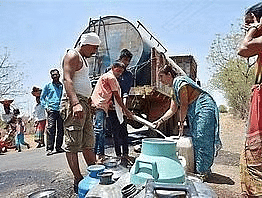
Why in news?
After last year's deficient monsoon, the Maharashtra government declared several parts of the state as drought-hit.
Geographical Differences:
Coastal areas receive excessive rainfall leading to flooding. Marathwada lies in the rain-shadow region, receiving significantly less rainfall (600-800 mm) compared to the western side of the Western Ghats (2,000-4,000 mm).
Topography and Soil:
Marathwada has clayey black soil (regur) which retains moisture but has a low infiltration rate, leading to poor groundwater recharge. The region's topography, with parallel tributaries and gently sloping hills, results in uneven water distribution, with valleys having perennial groundwater and upland areas facing acute water scarcity.
Impact of Climate Change:
Increasing drought severity and frequency in central Maharashtra due to climate change, worsening water stress in regions like Marathwada and North Karnataka.
Why is sugarcane production not suited for regions with less rainfall?
- High Water Requirement: Sugarcane needs 1,500-2,500 mm of water during its growing season, which is much higher than the annual rainfall in low-rainfall areas like Marathwada.
- Irrigation Demands: Sugarcane requires almost daily irrigation, consuming 61% of the region's irrigation water while occupying only 4% of the cropped area. This heavy water usage restricts the irrigation of other crops that are more suitable for the region's climate, such as pulses and millet.
- Government Policies: Long-standing government support for sugarcane pricing and sales has encouraged its cultivation in unsuitable regions. The recent promotion of sugarcane-juice-based ethanol production exacerbates the issue, diverting water resources away from more sustainable agricultural practices.
What is meant by the rain-shadow effect?
Occurs when moist winds from the Arabian Sea rise over the Western Ghats, causing heavy rainfall on the western side. By the time these winds descend on the eastern side (Western Maharashtra and Marathwada), they lose most of their moisture, resulting in significantly lower rainfall.
Impact on Marathwada:
Marathwada, located in the rain-shadow region, receives only 600-800 mm of annual rainfall, contributing to its dry climate and water scarcity issues.
How can supply-side solutions help the situation?
- Watershed Management: Building water-conserving structures such as contour trenches, earthen bunds, and gully plugs to capture and store runoff. Designing silt-trapping mechanisms to prevent soil erosion and maintain water retention structures.
- Rainwater Harvesting: Implementing measures to capture rainwater runoff from agricultural fields to recharge groundwater and reduce dependency on external water sources.
- Utilizing Government Programs: Leveraging funds from the Mahatma Gandhi National Rural Employment Guarantee Scheme (MGNREGS) for watershed management projects and training farmers in water conservation techniques.
- Promoting Water-Efficient Practices: Encouraging the use of water-efficient irrigation methods, such as drip irrigation, to optimize water usage. Shifting to drought-resistant crops and high-value, low-water-using crops to reduce water demand and improve agricultural sustainability.
Conclusion:
The state government has announced a massive Rs 59,000 crore package to transform the Marathwada region, with a focus on tackling the water crisis. This includes reviving stalled irrigation projects worth Rs 13,677 crore to make the region drought-free through water linking and diverting floodwaters to the Godavari basin.
Mains PYQ:
Elaborate the impact of National Watershed Project in increasing agricultural production from water-stressed areas. (UPSC IAS/2019)
GS3/Economy
New project to fix water deficit in flagship Jal Jeevan Mission
Source: The Hindu
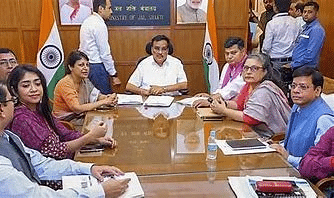
Why in news?
Union Jal Shakti Minister has said that the government was conceiving a new project to ensure that rural households, which were provided taps under the ambitious Jal Jeevan Mission but had not yet been able to avail water, would soon be provided potable water.
About
- Jal Jeevan Mission is aimed at providing safe and adequate drinking water to all rural households in India through individual tap connections by 2024.
- Launched on August 15, 2019, the mission focuses on delivering assured and regular potable water service at the household level.
- It is a decentralized, demand-driven, and community-managed program promoting a sense of ownership among local communities.
Nodal Ministry
- The Department of Drinking Water & Sanitation under the Ministry of Jal Shakti oversees the implementation of the mission.
Key Details
- The program includes mandatory source sustainability measures such as grey water management, water conservation, and rainwater harvesting.
- Emphasizes a community approach to water and incorporates extensive Information, Education, and Communication strategies.
- Seeks to create a 'janandolan for water', making water a priority for everyone.
Focus Activities
- Measurement Process
- Performance of the Scheme
- Har Ghar Jal Status
- Infrastructure Development
- Water Quality
- Sustainability
- Funding and Resources
- Community Participation
- Geographical Challenges
- Data Accuracy and Verification
- Coordination Among Agencies
Infrastructure Development
- Establishing necessary infrastructure in remote and rural areas including pipelines, water treatment plants, and storage facilities.
Water Quality
- Ensuring the quality of water supplied through taps is crucial due to health risks posed by contaminants like fluoride, arsenic, and nitrates.
Sustainability
- Maintaining water supply systems over time through regular maintenance, timely repairs, and efficient resource management is essential.
Funding and Resources
- Adequate funding and resource allocation are crucial for the mission's success, requiring financial and human resources at state and local levels.
Community Participation
- Engaging local communities in planning, implementation, and maintenance of water supply systems is critical for success.
Geographical Challenges
- Diverse geographical conditions in India present unique challenges in laying pipelines and ensuring consistent water supply.
Data Accuracy and Verification
- Accurately reporting and verifying functional household tap connections poses challenges, despite the self-certification process by gram panchayats.
Coordination Among Agencies
- Effective coordination between government agencies at various levels is crucial for overcoming bureaucratic hurdles and ensuring collaboration.
GS-II/International Relations
ICC issues arrest warrants for Russian defence leaders
Source: Indian Express

Why in news?
On Monday, June 24, the International Criminal Court (ICC) issued arrest warrants for former Russian Defence Minister Sergei Shoigu and current Chief of Staff of the Armed Forces Valery Gerasimov for “alleged international crimes” related to the Ukraine war.
Who are the Russian leaders and what effect does the move have on them?
- Sergei Shoigu: Former Russian Defence Minister, key ally of Putin, led the invasion of Ukraine in February 2022, removed from his post in May 2024.
- Valery Gerasimov: Current Chief of Staff of the Armed Forces, Deputy Defence Minister since November 2012, seen as the most powerful man in the government after Putin and Shoigu.
Impact on Shoigu and Gerasimov: Both have suffered reputational damage since the war began, criticized by Russian nationalists for failing to swiftly win the war against Ukraine.
What do the ICC charges say?
- Charges Against Shoigu and Gerasimov: Directing attacks at civilian objects, causing excessive incidental harm to civilians or damage to civilian objects.
- Responsibility: The two officials bear individual criminal responsibility for their actions, ordering the commission of crimes, and failing to exercise proper control over their forces.
- Specific Acts: Missile strikes against Ukrainian electric infrastructure, constituting multiple acts against a civilian population.
ICC Overview
- Establishment: Headquartered in The Hague, Netherlands, established under the 1998 Rome Statute.
- Purpose: Investigates and tries individuals charged with genocide, war crimes, crimes against humanity, and the crime of aggression.
- Membership: 123 countries are party to the Rome Statute, including Britain, Japan, Afghanistan, and Germany. The USA, India, and China are not members.
- Function: Prosecutes heinous offences when a country’s own legal system fails to act, unlike the ICJ which deals with inter-state disputes.
- Jurisdiction: Limited to offences occurring after July 1, 2002, committed in a country that ratified the agreement or by a national of a ratifying country, or cases referred by the UN Security Council.
Russia’s Stance:
Kremlin spokesman Dmitry Peskov stated that any decision of the ICC was “null and void” due to Russia not being an ICC member.
Effect on Leaders:
Putin and other leaders risk arrest if they travel to a state party to the ICC, which is obliged to arrest them under international law. This deepens Russia’s isolation from the West.
Ukraine’s Position:
Ukraine is not a State Party to the Rome Statute but has accepted ICC’s jurisdiction over alleged crimes occurring on its territory under Article 12(3) of the Statute. This requires Ukraine to cooperate with the ICC without delay or exception.
Conclusion:
The ICC’s charges against Russian leaders highlight significant legal and geopolitical challenges, deepening Russia’s isolation and emphasizing the need for global accountability in addressing war crimes and international conflicts.
Mains question for practice:
In light of the recent arrest warrants issued against Russian leaders, discuss the effectiveness and limitations of the ICC in prosecuting individuals from non-member states. (15M)
GS2/Governance
Will the Agnipath scheme be revamped?
Source: The Hindu
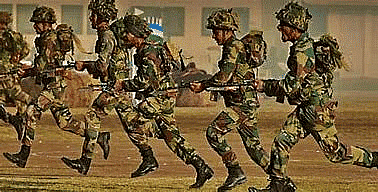
Why in news?
Following the 2024 election results, NDA allies Janata Dal (United) and Lok Janshakti Party (Ram Vilas) raised concerns about the Agnipath scheme and called for discussions on the matter.
What is the Agnipath scheme?
- The Agnipath scheme recruits soldiers, sailors, and airmen into the Indian armed forces for a four-year term, replacing the previous system of permanent recruitment. After completing their four-year tenure, up to 25% of Agniveers can be selected for permanent positions within the armed forces.
- Agniveers can obtain educational certificates and skill certifications during their service. They receive a lump sum amount upon completing their tenure but are not eligible for a pension.
Issues Associated with the Scheme
- Personnel Shortage: There is a significant shortage of personnel in the ‘below officer’ rank cadres, exacerbated by the recruitment freeze during the COVID-19 pandemic. The Army retires around 60,000 soldiers annually but only recruits 40,000, leading to a growing shortfall.
- Low Conversion Rate: The 25% conversion rate from Agniveers to regular soldiers is considered insufficient to address the personnel shortage.
- Compressed Training: The four-year tenure necessitates a shorter training period, which may impact the quality of training.
- Political and Social Opposition: The scheme has faced political opposition and led to violent protests in some parts of the country. Critics argue for a clause-by-clause review or complete scrapping of the scheme.
Present Scenario
As the Agnipath scheme marks two years since its implementation, the Department of Military Affairs (DMA) in the Defence Ministry is reviewing the scheme based on feedback from the armed forces.
Feedback Compilation:
The Navy and Air Force have compiled their feedback, while the Army is still in the process.
Recommendations:
Suggestions include increasing the intake numbers, raising the permanent recruitment rate from 25% to at least 50%, and extending the age limit for technical recruits from 21 to 23 years.
Review Process:
The DMA will compile all recommendations and submit them to the Defence Ministry for potential adjustments to the scheme.
Way forward:
- Enhance Educational and Skill Development Opportunities: Partner with educational institutions to provide Agniveers with advanced degrees and certifications that are recognized nationwide. Offer vocational training and skill development programs that are aligned with industry standards, improving post-service employability.
- Increase Permanent Induction Rate: Raise the conversion rate of Agniveers to permanent positions from 25% to at least 50% to address the personnel shortage effectively.
GS3/Defence & Security
Enemy Agents Ordinance: Strict Measures for Militant Assistance in J&K
Source: Indian Express
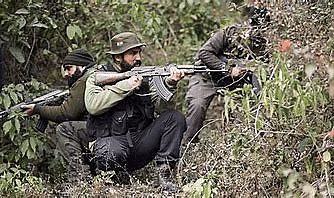
Why in news?
J&K Director General of Police stated that individuals assisting militants in J&K should be tried under the Enemy Agents Ordinance, 2005. The Enemy Agents Ordinance is more stringent than the Unlawful Activities (Prevention) Act (UAPA), 1967 with punishments including life imprisonment or death sentence.
Enemy Agents Ordinance: An Overview
It was first issued in 1917 by the Dogra Maharaja of J&K, the ordinance remains in effect. The ordinance mandates rigorous imprisonment for life, or imprisonment up to 10 years with a fine for aiding the enemy or engaging in actions detrimental to Indian military operations.
Its Evolution:
- Post-Partition Incorporation: The ordinance was retained as a law in J&K post-1947 and amended over time.
- Changes Post-2019: Following the repeal of Article 370, the Jammu and Kashmir Reorganisation Act retained the Enemy Agents Ordinance and other security laws while replacing many state laws with Indian laws, such as the Indian Penal Code.
Trial Procedures under the Ordinance
- Special Judge Appointment: Trials are conducted by a special judge appointed by the government in consultation with the High Court.
- Legal Representation: Accused individuals can only engage a lawyer if permitted by the court.
- No Appeal Provision: Verdicts can only be reviewed by a High Court judge chosen by the government, with the decision being final.
- Publication Bar: Unauthorized disclosure or publication of trial information is punishable by imprisonment up to two years, fine, or both.
Notable Application of the Ordinance
- Notable Cases: Many Kashmiris have been tried under the ordinance, including Maqbool Bhat, the founder of Jammu Kashmir Liberation Front, who was hanged in Tihar Jail in 1984.
- Current Context: The Enemy Agents Ordinance continues to be a critical tool in addressing militant assistance in J&K, reflecting the stringent legal measures in place to maintain security.
PYQ
1. [2019] The banning of ‘Jamaat-e-Islami’ in Jammu and Kashmir brought into focus the role of over-ground workers (OGWs) in assisting terrorist organizations. Examine the role played by OGWs in assisting terrorist organizations in insurgency affected areas. Discuss measures to neutralize the influence of OGWs.
2. Indian government has recently strengthened the anti-terrorism laws by amending the unlawful activities (Prevention) Act (UAPA), 1967 and the NIA Act. Analyze the changes in the context of prevailing security environment while discussing scope and reasons for opposing the UAPA by human rights organizations.
GS2/Polity
Role Played by the Office of Deputy Speaker of Lok Sabha
Source: Indian Express
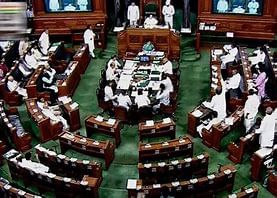
Why in News?
Since the Opposition has become stronger in the 18th Lok Sabha, its members are vying for the office of Deputy Speaker. However, the Opposition is forced to run for Speaker for the first time since 1952 because the government has been unwilling to extend any assurances on the post of Deputy Speaker.
Rules for the Election of the Deputy Speaker of Lok Sabha
Appointment:
- Article 93 states that the House of the People shall (as soon as may be) choose two members of the House to be respectively Speaker and Deputy Speaker. Article 178 contains the corresponding provision for the Speakers and Deputy Speakers in the state Assemblies.
- It is a parliamentary convention to elect a Deputy Speaker of the Lok Sabha from a party other than the ruling party to run an accountable democratic parliament.
- Time frame to appoint a Deputy Speaker: The Constitution does not specify a time frame for making the appointments and it is this gap in the provision that allows governments to delay or avoid appointing a Deputy Speaker. However, constitutional experts have pointed out that both Articles 93 and 178 use the words “shall” and “as soon as may be”. This means, not only is the election of the Speaker and Deputy Speaker mandatory, it must be held at the earliest.
Powers:
- According to Article 95(1), the Deputy Speaker performs the duties of the Speaker if the post is vacant. For example, After the first Speaker (G V Mavalankar) died in 1956 before his term ended, Deputy Speaker M Ananthasayanam Ayyangar filled in for the remaining tenure of Lok Sabha from 1956 to 1957. Again, after G M C Balayogi (Speaker in the 13th Lok Sabha) of the TDP, passed away in 2002, Deputy Speaker P M Sayeed (of Congress) became acting Speaker for two months. The Deputy Speaker has the same powers as the Speaker when presiding over the House. All references to the Speaker are deemed to be references to the Deputy Speaker as well for the times when s/he presides.
- Removal from the office: Once elected, the Deputy Speaker usually continues in office until the dissolution of the House. Under Article 94 (and Article 179 for state Assemblies), the Speaker or Deputy Speaker shall vacate his/her office if s/he ceases to be a member of the House of the People. They may also resign (to each other), or may be removed from office by a resolution of the House of the People passed by a majority of all the then members of the House.
Office of Deputy Speaker of Lok Sabha Held by the Opposition Since 1952
- From 1952 to 1969, the first four Deputy Speakers were from the ruling Congress.
- Between 1969 and 1977, G G Swell of the All-Party Hill Leaders Conference served as Deputy Speaker.
- From 1977 to 1979, Godey Murahari of the Congress held the post when the Janata Party government was in power.
- From 1980 to 1984, the DMK’s (a Congress ally at the time) G Lakshmanan held the post in the Indira Gandhi government.
- In the 8th Lok Sabha (1984-89), AIADMK’s Thambi Durai became Deputy Speaker when Rajiv Gandhi was Prime Minister.
- When Chandra Shekhar was Prime Minister (1990-91), Shivraj Patil (Congress) served as Deputy Speaker.
- In the 10th Lok Sabha (1991-96), when P V Narasimha Rao was Prime Minister, S Mallikarjunaiah of the BJP was Deputy Speaker.
- During the Congress-led UPA-I (2004-09) and UPA-II (2009-14) governments, the Deputy Speaker’s post was with the Opposition - first with Charanjit Singh Atwal of the Shiromani Akali Dal, and then with Kariya Munda of the BJP.
- The 17th Lok Sabha is the first and the only Lok Sabha which convened (from 2019 to 2024) without a Deputy Speaker.
- In 2023, a bench led by CJI sought responses on a PIL that contends that not electing a Deputy Speaker is against the letter and spirit of the Constitution.
Rules for the Election of the Deputy Speaker of Lok Sabha
- Election of the Speaker: The practice in both the Lok Sabha and state Assemblies has been to elect the Speaker in the first session of the new House. S/he is usually elected on the third day, after the oath-taking and affirmations have taken place over the first two days.
- The election of the Deputy Speaker: It is generally not delayed beyond the second session unless there are some genuine and unavoidable constraints. However, there is no bar on having this election in the first session of the new Lok Sabha or Assembly. In the Lok Sabha, it is governed by Rule 8 of the Rules of Procedure and Conduct of Business in Lok Sabha and shall be held on such date as the Speaker may fix.
GS3/Science and Technology
China’s Lunar Mission
Source: The Hindu

Why in News?
China’s Chang’e-6 has made history by being the first spacecraft to retrieve samples from the dark side of the Moon, a region hidden from Earth’s view.
- The probe successfully landed in northern China on June 25, marking the end of its 53-day journey that began on May 3. It collected core samples and surface rocks during its mission.
China’s Lunar Mission
Objectives
- Sample Return Mission: Chang'e 6 aimed to collect lunar samples for return to Earth.
- Technological Demonstration: The mission showcased technologies crucial for future lunar explorations.
Mission Details
- Landing Site: The targeted landing site was the South Pole-Aitken Basin, known for its geological significance.
- Spacecraft Components:The mission comprised an orbiter, lander, ascent vehicle, and return capsule.
- Sample Collection:The lander employed a robotic arm and drill for collecting lunar samples.
Significance of Chang’e 6 Lunar Mission
- Scientific Value of Sample Return Missions: Returned lunar samples enable detailed analysis using advanced laboratory instruments.
- Future Exploration and Utilization: Analyses from samples aid in understanding lunar history and potential resource utilization.
Revealing Lunar Secrets
- Differences Between Lunar Sides: Studying samples from the far side could provide insights into lunar geology and history.
- Potential Applications: Extracted samples may offer clues for future lunar resource utilization in space exploration.
Countries’ Lunar Exploration Race
- Global Lunar Missions: Several countries, including Japan, the US, and Russia, have initiated lunar missions.
- Future Prospects: Expectations of over 100 lunar missions by 2030, with plans for human lunar landings.
GS-III/ Science and Techology
China-France launches SVOM Satellite for Gamma-Ray Burst Study
Source: Times of India
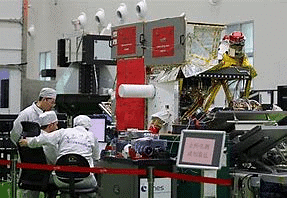
Why in News?
The Space Variable Objects Monitor (SVOM) satellite jointly developed by China and France was launched from the Xichang Satellite Launch Center.
About Space Variable Objects Monitor (SVOM)
- The SVOM is designed to study gamma-ray bursts (GRBs) resulting from explosive cosmic events like black hole births and neutron star collisions.
- It is the first astronomy satellite developed jointly by China and France, following their collaboration on an oceanographic satellite launched in 2018.
Importance of Studying Gamma-Ray Bursts (GRBs)
- GRBs are highly energetic bursts of gamma rays, lasting from less than a second to several minutes, occurring in distant parts of the universe. GRBs can erupt with a luminosity a quintillion times that of the Sun.
Types of GRBs
- Short GRBs: Result from collisions of neutron stars or a neutron star with a black hole, lasting less than two seconds, often followed by kilonovas.
- Long GRBs: Result from the explosive deaths of massive stars, lasting two seconds or longer.
Mission and Objectives of SVOM
- Primary Objective: To search for and study GRBs across the universe.
- Data Collection: Measure and analyze electromagnetic radiation properties of GRBs.
- Scientific Goals: Unlock mysteries about the universe’s evolution and gravitational waves, which are often associated with neutron star collisions.
- Real-time Detection: Transmit GRB data to ground control within about one minute, enabling coordinated observations with ground-based stations globally.
Features and Capabilities of SVOM
- Satellite Specifications: Weighs 930 kg and is equipped with four payloads, two developed by France and two by China.
French Contributions
- ECLAIRs and MXT telescopes to detect and capture GRBs.
Chinese Contributions
- Gamma Ray Burst Monitor (GRM): Measures the spectrum of GRBs.
- Visible Telescope (VT): Detects and observes visible emissions immediately after a GRB.
- Orbit Details: Placed in a low Earth orbit at an altitude of 625 km, with an orbital period of 96 minutes.
Significance of SVOM’s Findings
- Early Universe Insights: Aim to detect the earliest GRBs, providing information on the universe’s early stages and evolution.
- Kilonova Detection: Capability to search for kilonovas, enhancing understanding of stellar evolution and the origin of heavy elements like gold and silver in the universe.
|
44 videos|5271 docs|1113 tests
|
FAQs on UPSC Daily Current Affairs - 26th June 2024 - Current Affairs & Hindu Analysis: Daily, Weekly & Monthly
| 1. What is the significance of having a national security strategy in India? |  |
| 2. How did Sucheta Kripalani make history in India? |  |
| 3. What are the key factors driving diverse inflation dynamics in India's K-shaped economic recovery? |  |
| 4. How is Maharashtra addressing its water crisis? |  |
| 5. What is the objective of the new project launched to fix the water deficit in India's flagship Jal Jeevan Mission? |  |
















